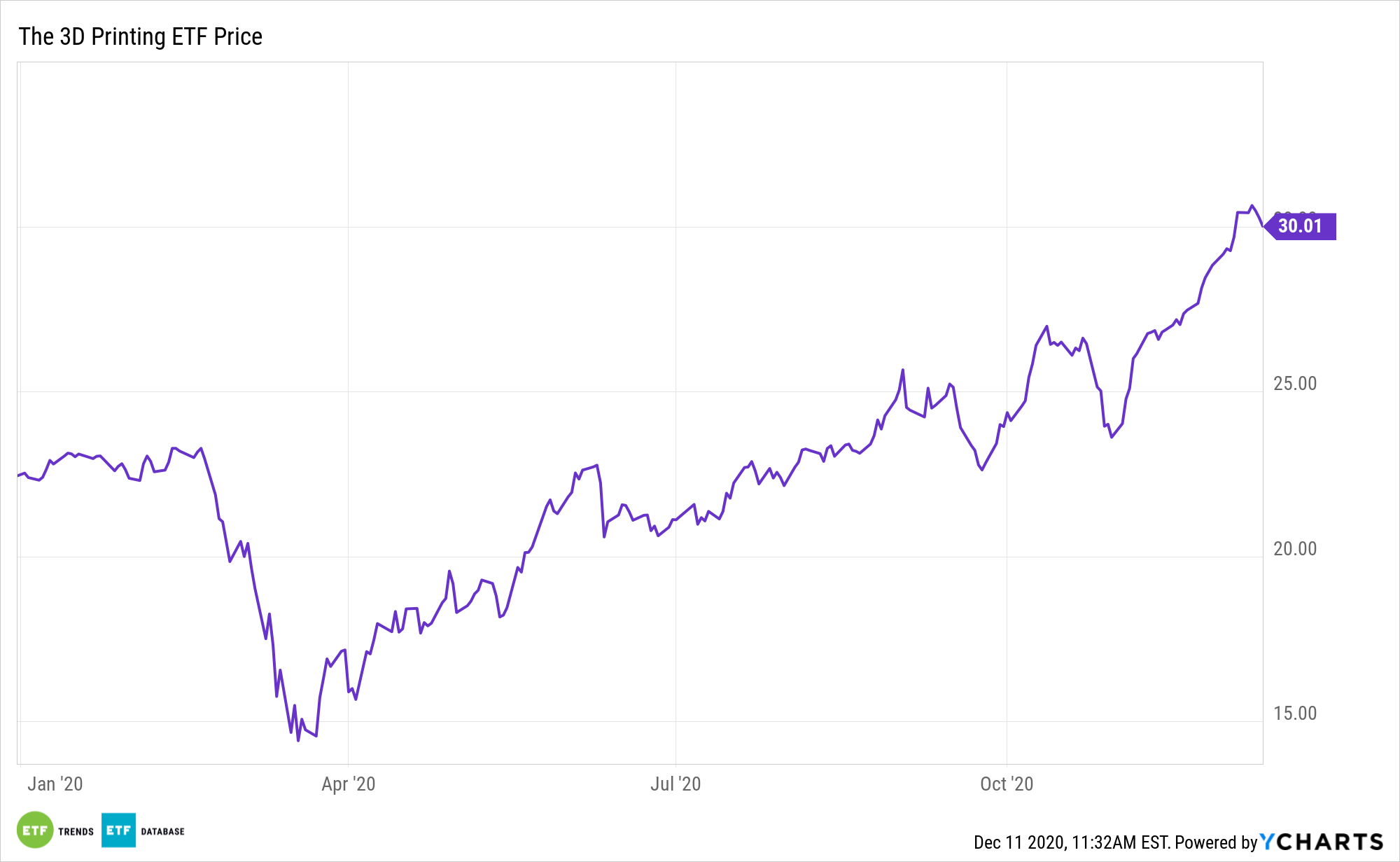Up nearly 35% year-to-date, the the 3D Printing ETF (CBOE: PRNT) remains a hidden gem among thematic exchange traded funds. Yet the fund is quickly growing out of its covert status as investors embrace the expansive 3D printing market, which even includes space exploration applications.
Passively managed PRNT offers leverage to that department as its benchmark “is composed of equity securities and depositary receipts of exchange-listed companies from the U.S., non-U.S. developed markets and Taiwan that are engaged in 3D printing-related businesses within the following business lines: (i) 3D printing hardware, (ii) computer-aided design (“CAD”) and 3D printing simulation software, (iii) 3D printing centers, (iv) scanning and measurement, and (v) 3D printing materials,” according to Ark.
“Future lunar landers might come equipped with 3D printed rocket engine parts that help bring down overall manufacturing costs and reduce production time. NASA is investing in advanced manufacturing – one of five industries of the future – to make it possible,” according to NASA. “Through a series of hot-fire tests in November, NASA demonstrated that two additively manufactured engine components – a copper alloy combustion chamber and nozzle made of a high-strength hydrogen resistant alloy – could withstand the same extreme combustion environments that traditionally manufactured metal structures experience in flight.”
The 3D Printing Revolution Continues
PRNT debuted nearly three years ago as the first US-listed ETF dedicated to the 3D printing theme. The fund is one of two passively managed products from New York-based Ark Investment Management. ARK believes 3D printing will revolutionize manufacturing by collapsing the time between design and production, reducing costs, and enabling greater design complexity, accuracy, and customization than traditional manufacturing.

As it has in other industries, 3D printing is disrupting space projects for the better.
“This 3D printed technology is a game-changer when it comes to reducing total hardware manufacturing time and cost,” said Tom Teasley, a test engineer at NASA’s Marshall Space Flight Center in Huntsville, Alabama. “These hot-fire tests are a critical step in preparing this hardware for use in future Moon and Mars missions.”
One of the traits that makes PRNT a compelling long-term idea is the sheer expanse of industry-level applications for 3D printing. What’s more important than the recent strength in PRNT is that there’s an increasingly strong long-term case for the 3D printing needs.
For more on disruptive technologies, visit our Disruptive Technology Channel.
The opinions and forecasts expressed herein are solely those of Tom Lydon, and may not actually come to pass. Information on this site should not be used or construed as an offer to sell, a solicitation of an offer to buy, or a recommendation for any product.

